
Battery manufacturer EnerSys (NYSE: ENS) reported Q3 CY2025 results topping the market’s revenue expectations, with sales up 7.7% year on year to $951.3 million. Guidance for next quarter’s revenue was better than expected at $940 million at the midpoint, 1.4% above analysts’ estimates. Its non-GAAP profit of $2.56 per share was 8.8% above analysts’ consensus estimates.
Is now the time to buy EnerSys? Find out by accessing our full research report, it’s free for active Edge members.
EnerSys (ENS) Q3 CY2025 Highlights:
- Revenue: $951.3 million vs analyst estimates of $890.3 million (7.7% year-on-year growth, 6.9% beat)
- Adjusted EPS: $2.56 vs analyst estimates of $2.35 (8.8% beat)
- Revenue Guidance for Q4 CY2025 is $940 million at the midpoint, above analyst estimates of $927.1 million
- Adjusted EPS guidance for Q4 CY2025 is $2.76 at the midpoint, above analyst estimates of $2.55
- Operating Margin: 9.7%, down from 11.2% in the same quarter last year
- Free Cash Flow was -$20.68 million, down from $3.45 million in the same quarter last year
- Sales Volumes rose 3% year on year (-3% in the same quarter last year)
- Market Capitalization: $4.61 billion
“Our strong performance in the quarter reflects solid execution and our commitment to continuous improvement and collaboration across the organization,” said Shawn O’Connell, President and Chief Executive Officer of EnerSys.
Company Overview
Supplying batteries that power equipment as big as mining rigs, EnerSys (NYSE: ENS) manufactures various kinds of batteries for a range of industries.
Revenue Growth
Reviewing a company’s long-term sales performance reveals insights into its quality. Any business can put up a good quarter or two, but the best consistently grow over the long haul. Regrettably, EnerSys’s sales grew at a tepid 4.7% compounded annual growth rate over the last five years. This was below our standard for the industrials sector and is a tough starting point for our analysis.
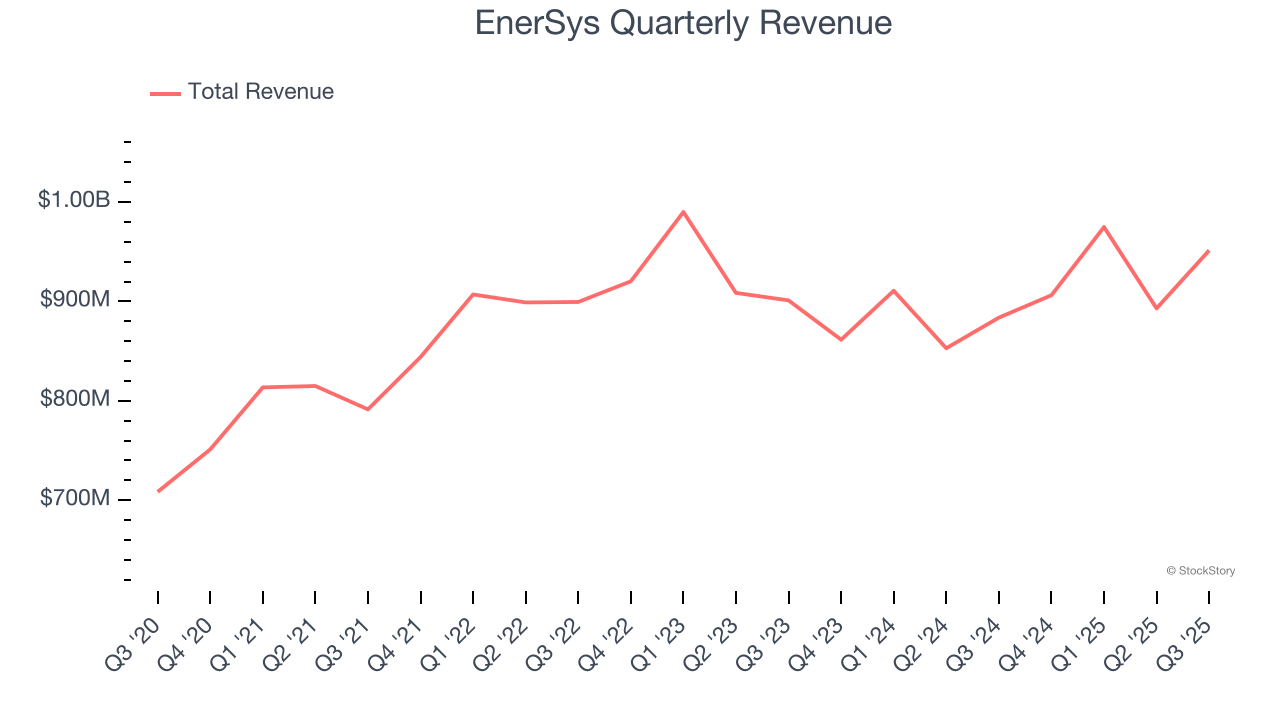
We at StockStory place the most emphasis on long-term growth, but within industrials, a half-decade historical view may miss cycles, industry trends, or a company capitalizing on catalysts such as a new contract win or a successful product line. EnerSys’s recent performance shows its demand has slowed as its revenue was flat over the last two years. 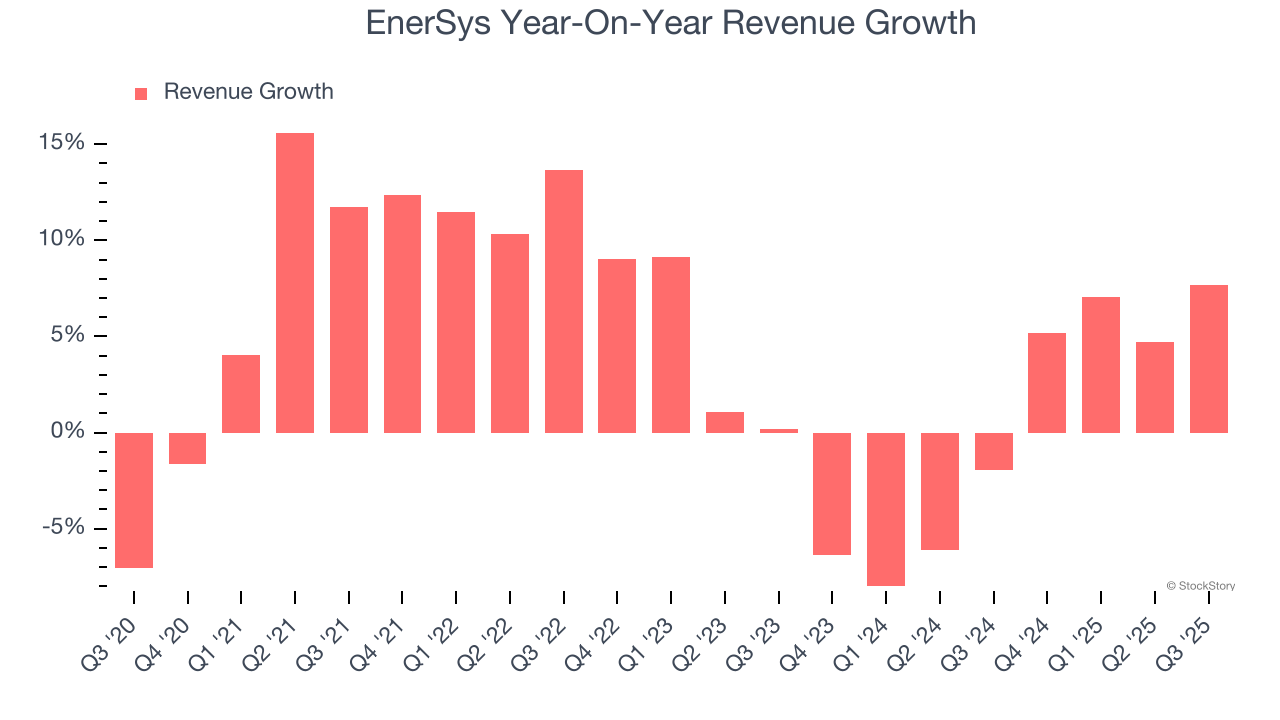
We can better understand the company’s revenue dynamics by analyzing its number of units sold. Over the last two years, EnerSys’s units sold averaged 1.5% year-on-year declines. Because this number is lower than its revenue growth, we can see the company benefited from price increases. 
This quarter, EnerSys reported year-on-year revenue growth of 7.7%, and its $951.3 million of revenue exceeded Wall Street’s estimates by 6.9%. Company management is currently guiding for a 3.7% year-on-year increase in sales next quarter.
Looking further ahead, sell-side analysts expect revenue to remain flat over the next 12 months. This projection doesn't excite us and implies its newer products and services will not accelerate its top-line performance yet.
Microsoft, Alphabet, Coca-Cola, Monster Beverage—all began as under-the-radar growth stories riding a massive trend. We’ve identified the next one: a profitable AI semiconductor play Wall Street is still overlooking. Go here for access to our full report.
Operating Margin
EnerSys has done a decent job managing its cost base over the last five years. The company has produced an average operating margin of 9%, higher than the broader industrials sector.
Looking at the trend in its profitability, EnerSys’s operating margin rose by 5.3 percentage points over the last five years, as its sales growth gave it operating leverage.
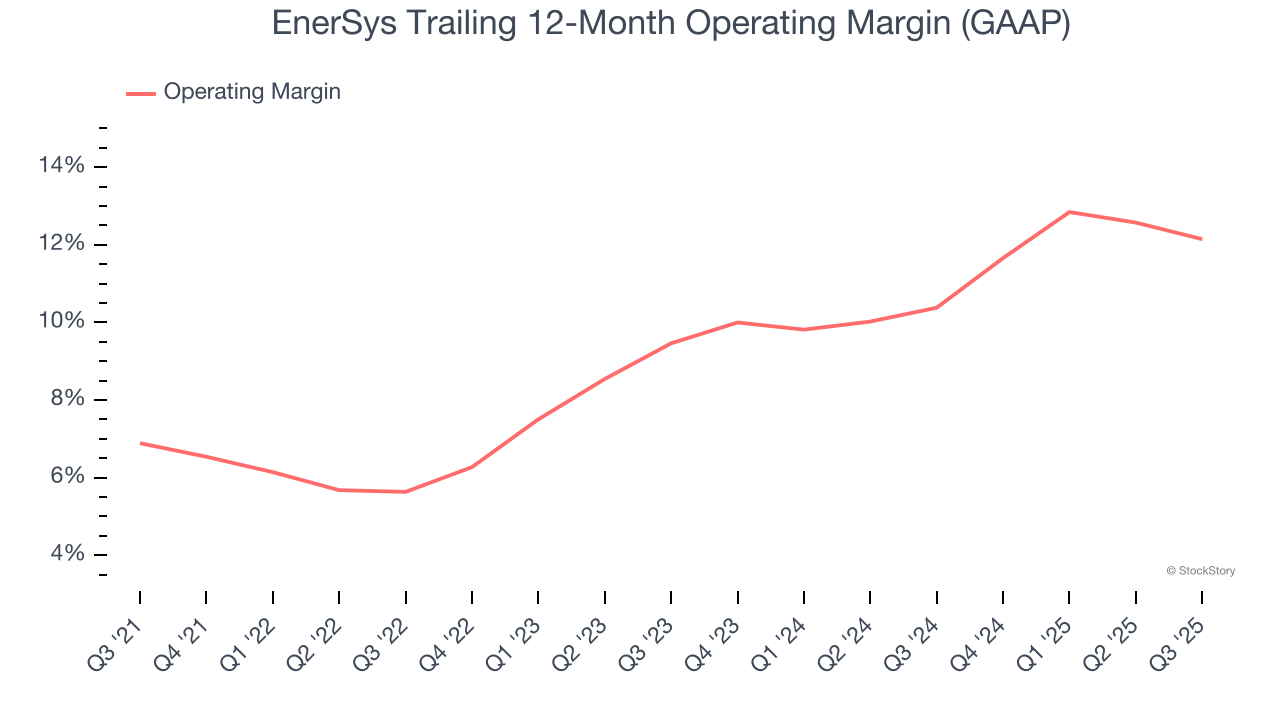
In Q3, EnerSys generated an operating margin profit margin of 9.7%, down 1.6 percentage points year on year. Since EnerSys’s operating margin decreased more than its gross margin, we can assume it was less efficient because expenses such as marketing, R&D, and administrative overhead increased.
Earnings Per Share
We track the long-term change in earnings per share (EPS) for the same reason as long-term revenue growth. Compared to revenue, however, EPS highlights whether a company’s growth is profitable.
EnerSys’s EPS grew at an astounding 21.4% compounded annual growth rate over the last five years, higher than its 4.7% annualized revenue growth. This tells us the company became more profitable on a per-share basis as it expanded.
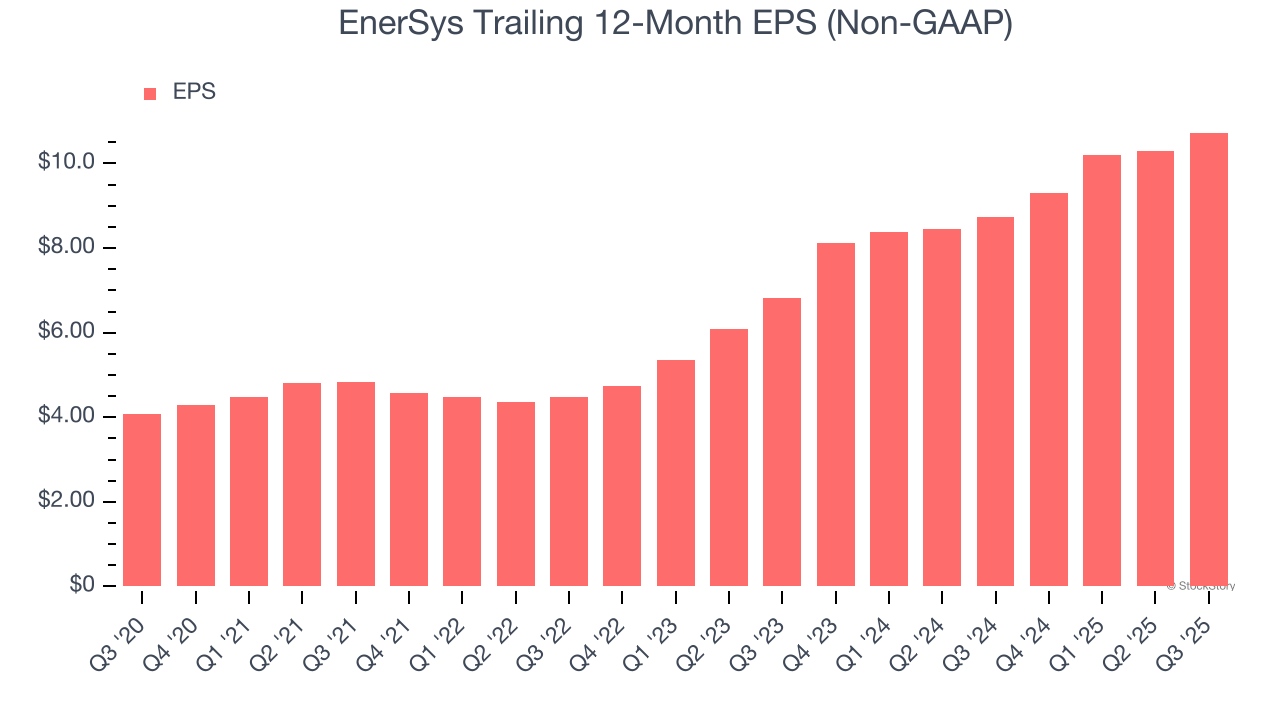
Diving into EnerSys’s quality of earnings can give us a better understanding of its performance. As we mentioned earlier, EnerSys’s operating margin declined this quarter but expanded by 5.3 percentage points over the last five years. Its share count also shrank by 11.9%, and these factors together are positive signs for shareholders because improving profitability and share buybacks turbocharge EPS growth relative to revenue growth. 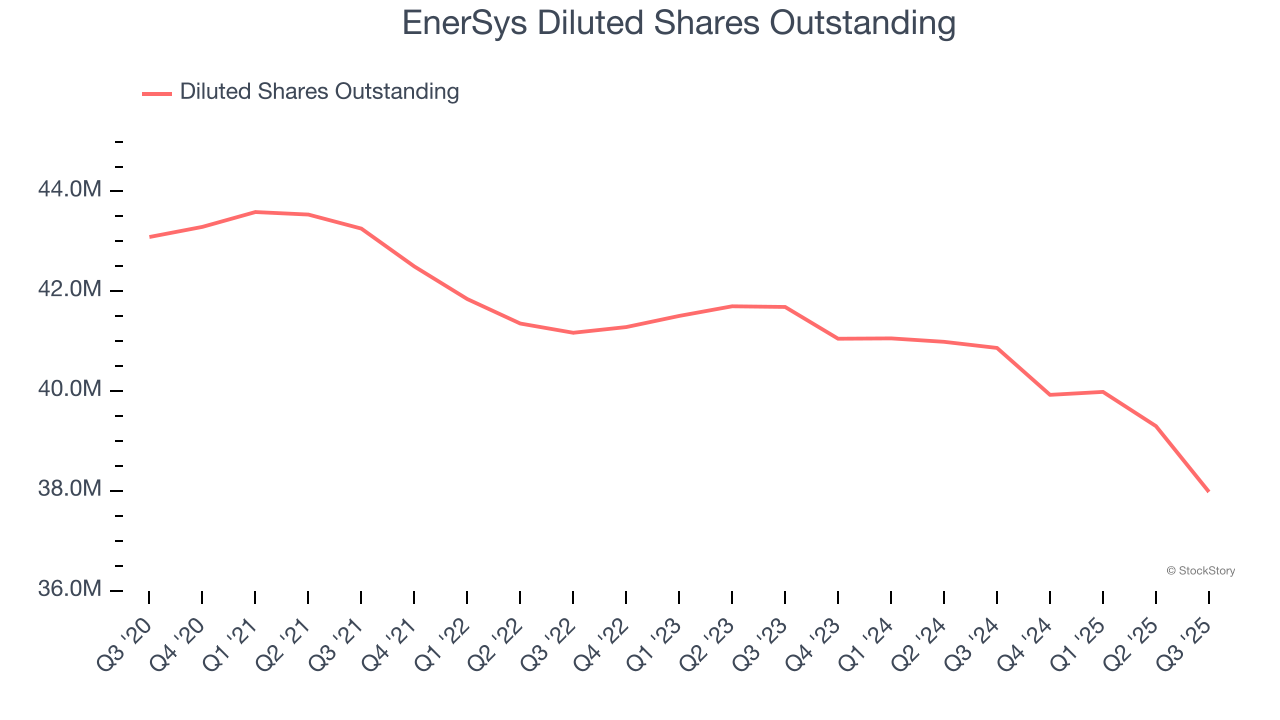
Like with revenue, we analyze EPS over a more recent period because it can provide insight into an emerging theme or development for the business.
For EnerSys, its two-year annual EPS growth of 25.4% was higher than its five-year trend. We love it when earnings growth accelerates, especially when it accelerates off an already high base.
In Q3, EnerSys reported adjusted EPS of $2.56, up from $2.12 in the same quarter last year. This print beat analysts’ estimates by 8.8%. Over the next 12 months, Wall Street expects EnerSys’s full-year EPS of $10.73 to shrink by 5%.
Key Takeaways from EnerSys’s Q3 Results
We were impressed by how significantly EnerSys blew past analysts’ sales volume expectations this quarter. We were also glad its EPS guidance for next quarter trumped Wall Street’s estimates. Overall, we think this was a decent quarter with some key metrics above expectations. The stock traded up 4.3% to $132.25 immediately after reporting.
Indeed, EnerSys had a rock-solid quarterly earnings result, but is this stock a good investment here? If you’re making that decision, you should consider the bigger picture of valuation, business qualities, as well as the latest earnings. We cover that in our actionable full research report which you can read here, it’s free for active Edge members.





